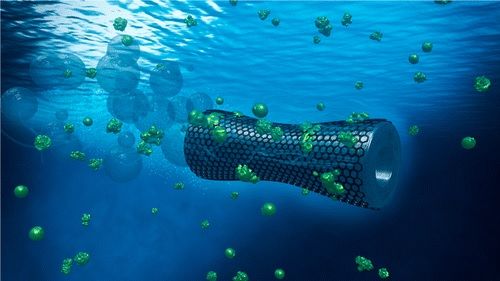(Phys.org)—A new study shows that a swarm of hundreds of thousands of tiny microbots, each smaller than the width of a human hair, can be deployed into industrial wastewater to absorb and remove toxic heavy metals. The researchers found that the microbots can remove 95% of the lead in polluted water in one hour, and can be reused multiple times, potentially offering a more effective and economical way to remove heavy metals than previous methods.
The researchers, Diana Vilela, et al., have published a paper on the lead-adsorbing microbots in a recent issue of Nano Letters.
“This work is a step toward the development of smart remediation system where we can target and remove traces of pollutant without producing an additional contamination,” coauthor Samuel Sánchez, at the Max-Planck Institute for Intelligent Systems in Stuttgart, Germany; the Institute for Bioengineering of Catalonia in Barcelona; and the Catalan Institution for Research and Advanced Studies in Barcelona, told Phys.org.

It that’s real, well, we might have some hope to save our planet!
I think that such a technology is far away from mass implementation. Though there are some other ways in fighting ocean pollution that can be immediately put in use. For instance, an american scientist had recently presented a very efficacious way of dealing with oil spills. He pours some magnetic dust onto the polluted water area, which then mixes with the oil particles. Finally he collects this mixture with a magnetic baton. The purification level reaches almost 90%.